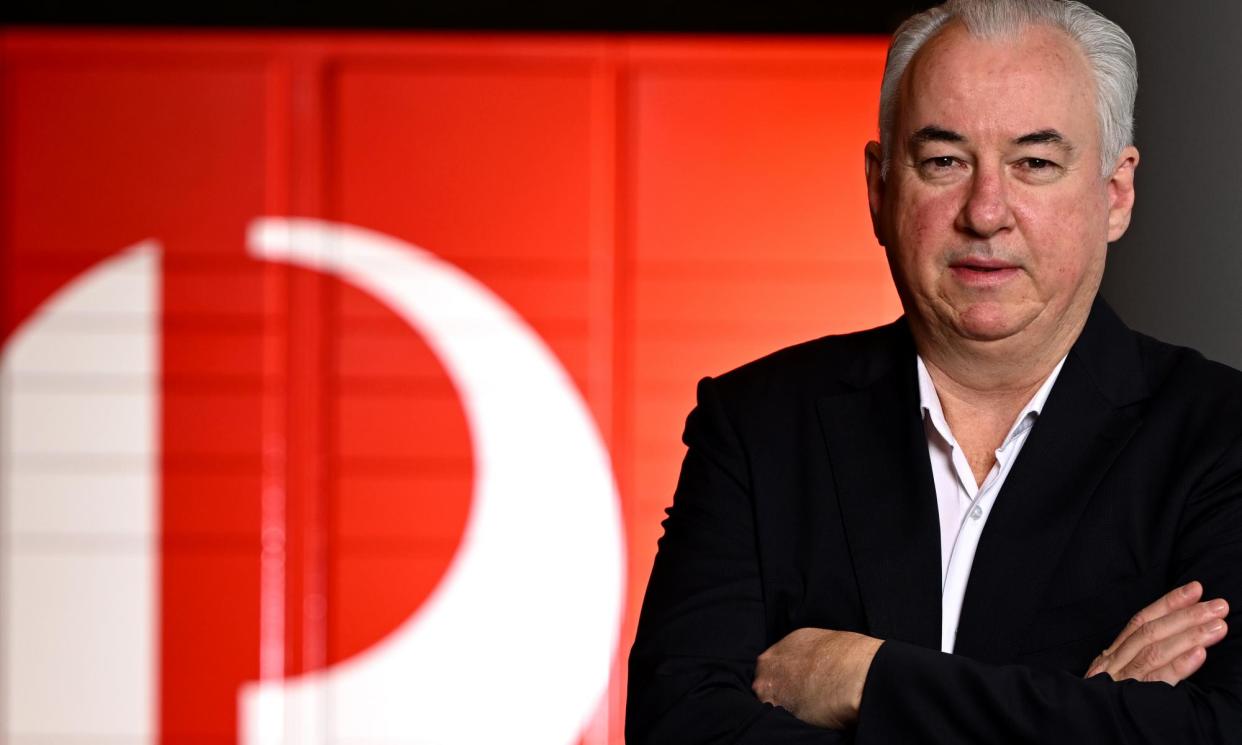Australia Post offices could one day include EV charging stations as part of strategy to halt losses

Electric vehicle charging at your local post office could one day be a reality, as Australia Post flags the future of its “quest to simplify” after another loss in its 2024 financial year results.
On Friday, the company reported a pre-tax loss of $88.5m. This was less than last year’s $200.3m deficit. But despite the improvement in underlying performance and ongoing efforts to modernise, the government-owned postal corporation is “still unfortunately in a loss-making situation,” the CEO, Paul Graham, told Guardian Australia.
He said the postal service was focusing on investing in technology, branch formats and its fleet, which recently grew its number of electric delivery vehicles by 10% (with 500 new vehicles announced).
Asked if this meant plans to roll out EV charging stations, Graham replied that Australia Post would “continue to look at how we … support our own network for EV charging”, and consider partnerships to “cater for our own needs as well as the broader community”.
“Could there be an opportunity in the future where at that post office there could be the capability to provide charging capabilities to the community? Yes.”
“Who do we partner with? How do we do that? They are the things that we are working through as part of our sustainability agenda.”
A lot of work meanwhile remained around “structural changes”, Graham said – the most immediate of which was the ongoing decline in the volume of letters sent.
Related: Modern mail: Australia Post to end daily letter deliveries in a bid to avoid losses
As of the end of August, this had dropped 12.9%, to an all-time low of 1.76bn . “We are back to the volumes we have seen in the 1950s,” Graham said. “The population has grown threefold since then.”
The average household now receives fewer than two addressed letters a week, a number expected to halve in the next five years, according to a media release.
Letters losses were $361.8m, down 5.8% – a slight improvement on the year prior, attributed to the $0.30 increase in the basic postage rate in April 2024 from $1.20 to $1.50. Raising the postage rate again is also on the cards, with Graham confirming Australia Post is “following the process” of application to the ACCC again this year.
“That is an important part of ensuring that we minimise the losses in that business,” he said. “We will still have significant losses, but obviously it helps, and that is why the revenue didn’t decline as much as the volume.”
The company is delivering mail every alternate day to help lower costs, and has added 10,000 more delivery points in the last year.
But Australia Post says it is “not walking away” from the letter-delivery service.
An increase in cash withdrawals through Bank@Post services has put stress on Australia Post, Graham said – especially in locations without other banks, where it is the only provider.
“It is a pressure,” Graham said. “We didn’t anticipate the growth in that area when we first did our Bank@Post agreements with the three major banks, Commonwealth, NAB and Westpac.”
Growing demand for cashflows was coming from small businesses such as cafes and hairdressers, he said.
“What we have said to the banks is, we are happy to step up and provide those services, but the banks need to make sure that they are adequately funded.”
Over-the-counter transactions have also fallen by 4.9%, and by more than a quarter since 2019.
Meanwhile, parcels made $6.46bn revenue – an increase of 3.3% on the previous year.
“This is a solid result in a highly competitive environment that sees Australia Post competing against large, well-funded foreign multinationals and private equity operators,” a media release said.
The parcel locker rollout is “aggressively ramping up,” Graham said. “Our customers tell us that is the best experience they have.”
More than 1.4 million customers are registered for the 24-hour parcel locker service. Almost eight million parcels were delivered to more than 59,000 lockers across almost 700 locations.
“You will see us roll out more of those points of presence that creates greater access to Australia Post,” Graham said.
Group revenue was up 1.8% to $9.13bn in the last financial year. Community service obligations, requiring government-owned Australia Post to meet social and commercial objectives, cost $447.0m.


